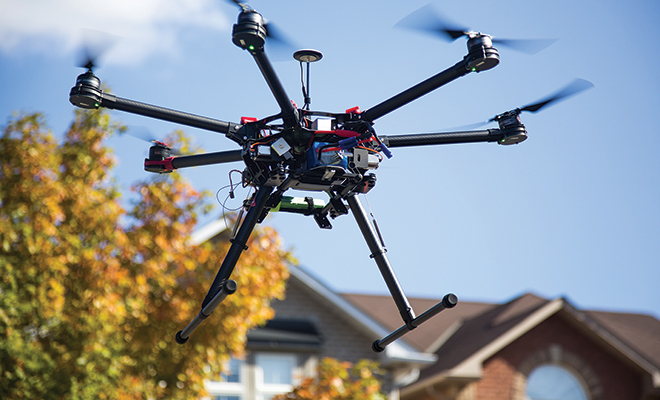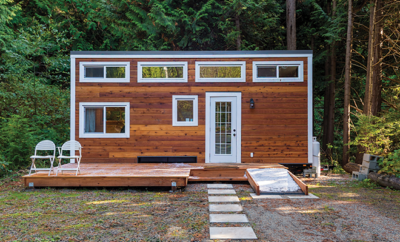
Drones: A Bird’s Eye View for Real Estate Professionals
Remember the days when receiving a new laptop for Christmas was exciting? You may not think times have changed so much that state-of-the-art Macbooks are no longer satisfying gifts. However, with the noticeable rise of consumer drones, everyone from college students to retired businesswomen seeking a new hobby were hoping to see a drone wrapped under the tree this year.
The presence of drones is becoming almost ubiquitous, particularly on social media. While everyone seems to be having fun with their drones, the potential for commercial use of drones seems to be getting ready to take off. In particular, real estate agents are seeking the commercial use of drones for photography to increase sales.
Drones, or unmanned aerial vehicles (UAVs), appeal to real estate agencies as a means to use photography for marketing purposes, and we can see why. The use of drones allows for a unique and compelling way to immerse buyers or tenants that other traditional means of media may not be able to accomplish. Who wouldn’t want to check out a luxurious mansion from a bird’s eye view? Aerial photos and videos of homes listed for sale are becoming more common as real estate agents and hobbyists rally to legitimize the use of drones to market house listings. But can someone using drones for commercial reasons really call themselves a hobbyist?
While some real estate agents claim that as long as they are not charging money for their drone footage, they are engaging in recreation and therefore qualify as a hobbyist, the Federal Aviation Administration (FAA) does not seem to agree, stating that “A Realtor® using a model aircraft to photograph a property that he is trying to sell and using the photos in the property’s real estate listing is not engaged in a hobby or recreation.” The FAA has been adamant that drone use for commercial purposes is only legal on a case-by-case basis. Yet things may be looking up for real estate agents using drones, as the FAA Modernization and Reform Act of 2012 requires that the FAA implement clear-cut regulations allowing the commercial use of UVAs no later than September 30, 2015. Further, the FAA predicts that by 2020, more than 30, 000 small drones will be used for a variety of business purposes.
Real estate drone enthusiasts may not have to wait that long. Since January 2015, drone operating agents are (literally) touching down on their goals, as the FAA has been issuing exceptions for real estate-related drone use as long as users have a private pilot’s license. There are many strict rules and regulations involved in acquiring this specific type of license, and the process is expensive and time consuming.
There are currently four real estate commercial drone approvals to date and the number is expected to keep increasing. The licensed operators have stated that the process of acquiring a license to fly a small, unmanned remote-controlled aircraft is just as extensive and demanding as the process of becoming licensed to fly an actual plane, due to the FAA’s safety concerns for bystanders on the ground and the fear that drones could appeal to terrorists as weapons.
Nevertheless, the National Association of Realtors includes this statement on their website: “Given the current FAA prohibition, the National Association of REALTORS® recommends that its members not use this technology for any purpose related to selling property.” The association has joined Know Before You Fly, a campaign founded by the Association for Unmanned Vehicle Systems International, the Academy of Model Aeronautics and the Small UAV Coalition in partnership with the FAA to educate prospective users about the safe and responsible operation of unmanned aircraft systems.
In consideration of safety concerns, the introduction of Ares Drones’ software may also be making life a little easier for those wanting to fly drones for real estate purposes. Founded in September 2014 by Ben Brautigam, Sherwyn Saul and Justin Miller, Ares Drones has created the FlySafe app that prohibits drones from entering no-fly zones and stops elevation of the devices short of the 400-foot height ceiling imposed by regulators. Designated no-fly zones are marked in red circles on its map, and any flight plan that attempts to pass through a zone is rejected. Only when a flight plan is approved will the drone be able to fly along a path without any manual interference. Ares software caters to the safety concerns of the FAA and offers a solution to the controversy surrounding the logistics of drone use. The goal of Ares is not to cut hobbyist-controlled flights out, but to market the technology to real estate and insurance companies. Miller states, “The way the FAA has traditionally worked is that you plan your flight before you fly…with drones, we don’t have that right now…we want to build that back in.”
While the commercial use of drones has certainly proven to be controversial, it does beg the question: is the sky literally the limit? HLM
Sources: aresdrones.com, realtor.org, inman.com, techcrunch.com, cronkitenewsonline.com, natlawreview.com and post-gazette.com.







